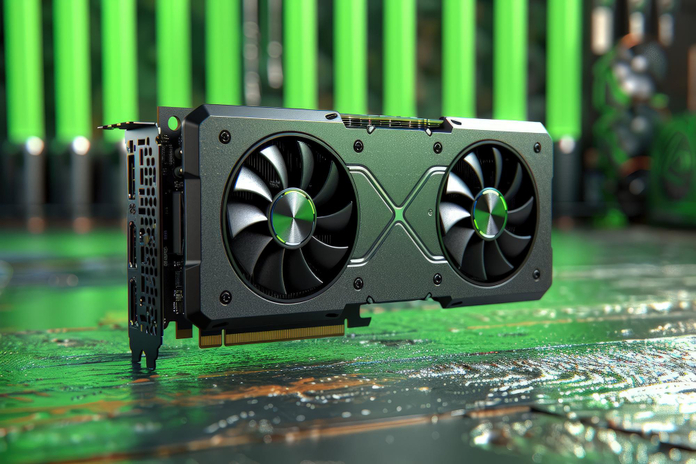Nvidia (NASDAQ:NVDA) recently experienced a dramatic selloff that wiped $279 billion off its market value, raising concerns about the ongoing Nvidia stock volatility. This sharp decline has traders closely monitoring key price levels, particularly around $100 per share, as they search for clues on where the market might stabilize. With investor anxiety mounting and no clear positive catalyst in sight, the situation is a reminder of the unpredictable nature of high-growth stocks like Nvidia.
Key Price Levels in Focus
Jay Woods, the chief global strategist at Freedom Capital Markets, pointed to $100 per share as a critical price level for Nvidia stock volatility. As Nvidia shares dropped to around $106 on Tuesday, Woods cautioned that a close below the August low would indicate a significant change in the stock’s technical outlook.
“I don’t want to see the stock make a new closing low by taking out the August low. That would really suggest that things have changed, at least in terms of the technicals,” Woods said. He added that Nvidia’s stock might find support near the $100 level before entering a period of sideways trading.
Earnings Disappoint and AI Spending Concerns
The recent selloff came on the heels of Nvidia’s earnings report, which fell short of the high expectations set by investors. The company’s results sparked a wave of Nvidia stock volatility, with shares tumbling 14% over just three trading sessions. Adding to investor concerns were two research reports published on Tuesday that raised caution about companies’ spending on artificial intelligence. These reports suggest that AI spending by Nvidia’s customers might not deliver the returns expected in the short term, further fueling the stock’s downward trajectory.
The broader AI market has been a significant driver for Nvidia’s growth, but the long-term sustainability of this spending is now under scrutiny. Michael Cembalest, chairman of market and investment strategy for JPMorgan Asset Management, emphasized that broader corporate demand beyond AI giants like OpenAI will be crucial over the next 12 to 18 months to justify the immense spending on Nvidia’s AI hardware.
The DOJ Antitrust Investigation
To add to Nvidia’s woes, the U.S. Justice Department has sent subpoenas to Nvidia as part of an antitrust probe, seeking to determine if the company has violated competition laws in its dominant position as a supplier of AI processors. This investigation has intensified the uncertainty surrounding Nvidia’s future, leading to further Nvidia stock volatility. However, Nvidia is not alone, as other companies involved in AI and chip manufacturing are also being scrutinized in the investigation.
Lack of Positive Catalysts in the Short Term
According to Michael Kirkbride, portfolio manager at Evercore Wealth Management, Nvidia is in a challenging position because there are few upcoming events that could provide a positive boost to the stock in the near term. “We’re in a bit of a void right now. We’re through with earnings, and there is a lot of economic data coming up this month,” Kirkbride said. With no major catalysts on the horizon, Nvidia stock volatility is likely to remain elevated in the short term.
Kirkbride added that the market is in a “shoot-first” mentality, meaning that traders are quick to react to negative news without waiting for a clearer long-term outlook. This reactive environment has further exacerbated the downward pressure on Nvidia’s stock.
Long-Term Outlook for Nvidia
Despite the recent Nvidia stock volatility, many long-term investors remain optimistic about the company’s prospects. Woods and Kirkbride both maintain positive outlooks for Nvidia, believing that the company’s fundamentals remain strong. “There’s nothing fundamentally wrong with the company or its earnings report,” Kirkbride said, adding that the recent selloff does not reflect any material changes in Nvidia’s business model or customer base.
Investors such as Kirkbride continue to see Nvidia as a long-term growth story, driven by its leadership in the AI and semiconductor markets. While the recent volatility is concerning, these investors believe that Nvidia’s stock will eventually stabilize and resume its upward trajectory as demand for AI technology continues to grow.
Conclusion: A Temporary Setback?
The current Nvidia stock volatility has undoubtedly caused concern among investors, especially in the wake of disappointing earnings and heightened regulatory scrutiny. However, Nvidia’s leadership position in the AI market, combined with its strong fundamentals, suggests that this could be a temporary setback rather than a long-term decline. Investors will be closely watching the stock’s performance around the $100 level, hoping for signs of stabilization in the weeks ahead.
As Nvidia navigates through this challenging period, long-term holders like Woods and Kirkbride remain confident in the company’s future growth prospects, even as short-term volatility persists.
Featured Image: Freepik



